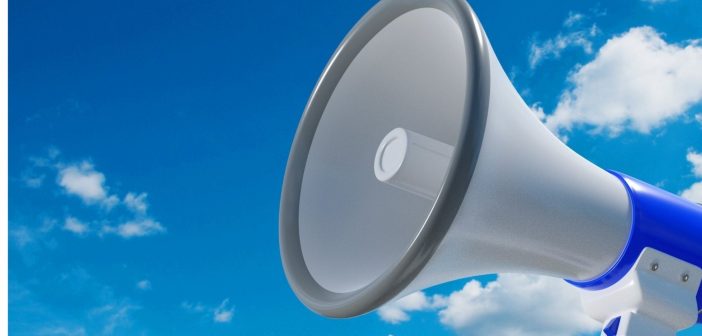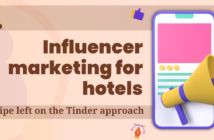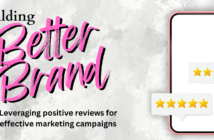Hotelier messaging strategies during covid-19 drawn from consumer sentiment research
by STEPHEN DAVIS
From numerous engagements with clients throughout the leisure industry, here are some insights into effective strategies for communicating with customers. With the impacts of COVID-19, clear, concise, and compelling communication is now an even greater focus than before.
It may sound obvious when you say it out loud or read it in print, but one of the most powerful ways to learn how to best communicate with your customers is simply to ask them about their concerns and preferences. Simple, right? And after personally taking part in numerous research projects with clients that have all asked the seemingly simple “What do you want?” question, I’ve noticed several effective strategies for communicating with customers.
First, we’ll start with some guiding principles for all communication, then we’ll dive into specific tactics for communicating during the pandemic.
SELECTING STRATEGIES
The correct strategy for marketing messages is always to lead with the consumer, so when crafting messages for consumer-facing media, start by looking at it from the consumer’s perspective. Regardless of whether it’s general brand media, promotional campaigns, or targeted digital advertising, consumer perspective is paramount in all communications.
Ultimately, the goal of marketing media is for the consumer to personally identify with the experience. Consumers react more favorably to marketing that speaks directly to their emotional drivers. This can be hard to do in a still image, short video, or four lines of copy when you may have a diverse target market. So, narrowing your scope can help.
Once you identify an important segment to target, craft marketing messages that speak directly to those guests. Messaging and media assets should include customers on the property engaging with staff and enjoying property amenities. While images of empty hotel lobbies and restaurants show a pristine experience, it doesn’t convey whether it’s “for people like me.” Amenities and the types of guests shown can be customized according to your target segments.
Too often, marketing messages include pricing or discounts that require consumers to do their own math to understand the value. This is especially true when it comes to savings messages used in promotions and packaging. Whenever a message is accompanied by a savings offer, you should explicitly state the value of the offer in the messaging. Where possible, indicate both the percent discount and the dollars off.
And while this may seem like a no-brainer, it’s a simple, often-overlooked, tactic that pays big rewards when you’re able to eliminate as many barriers as possible between the shopping process and payment confirmation. Making the payment process even a tiny bit simpler for the consumer makes you more likely to retain their attention and gain their trust to complete the booking.
STRATEGIES FOR MESSAGING BEYOND COVID-19
These principles should always be top of mind, but the unique challenges of COVID-19 have made messaging even more critical and has required creative approaches. Safety concerns continue to be a primary barrier to travel. The right messaging and imagery can be a critical factor in making potential guests feel safe enough to book a room during the pandemic. After fielding research during COVID-19, there are a few clear strategies to which consumers react strongly.
Though the country is seeing the early roll out of vaccines, experts believe social distancing will continue to be part of our lives for at least the first half of 2021. Guests want to travel, but they also want to feel safe.
Our research indicates that sharing safety measures and cleaning practices are major drivers for how comfortable a guest feels visiting your hotel. In particular, consumers want to know what extra measures are being taken to thoroughly disinfect the room, how common areas are being socially distanced, and how interaction with team members and other guests can be avoided if desired. This may involve direct-to-room check-in, bag breakfast instead of buffets, or capacity constraints at the pool or fitness center.
Having too much copy in marketing communications can be overwhelming. But when it comes to explaining the steps being taken to keep guests safe, native channels and pre-arrival communications should provide a balanced level of detail.
To bring it home for the guest, visually show safety measures in place. Include images of social-distance markers and changes in operation to accommodate safety. Assets on all consumer-facing media should be updated to show employees and guests wearing masks. Where possible, leverage images of guests enjoying open outdoor spaces while being socially distanced.
Leisure customers have been more vocal on review channels about safety concerns and comfort experienced during travel. Leverage social listening to ensure protocols are matching customer expectations. It is also important for PR teams to monitor and respond to negative reviews to mitigate the impact.
Reach customers with safety messages through a channel they trust. Providing local influencers with a short stay in exchange for a review of the experience is a cost-effective way to increase social proof and consumer demand.
At the end of the day, communicating to consumers is about getting your potential guests to immediately identify with the experience. Keep it focused on the consumer and be honest about your COVID-19 safety precautions. ■
 Stephen Davis, Integrated Insight’s Vice President of Pricing & Revenue Consulting, serves the hospitality industry with expertise in pricing, revenue optimization, and forecasting. Stephen served previously as the Sr. Analyst of F&B Revenue Forecasting at Walt Disney Parks and Resorts. And prior, Stephen was a member of the Disney Resorts Forecasting team, focused on driving occupancy and ADR forecasts for three Disneyland hotels.
Stephen Davis, Integrated Insight’s Vice President of Pricing & Revenue Consulting, serves the hospitality industry with expertise in pricing, revenue optimization, and forecasting. Stephen served previously as the Sr. Analyst of F&B Revenue Forecasting at Walt Disney Parks and Resorts. And prior, Stephen was a member of the Disney Resorts Forecasting team, focused on driving occupancy and ADR forecasts for three Disneyland hotels.
Best Practices and Real-World Examples
Identify your Customers’ Perspective?
➲ How does my customer use my product?
➲ How easy it is for customers to find the information they need and book a room?
➲ How well is our value proposition communicated to consumers?
Speak Directly to Your Target Market in Marketing Media
Define your target market and segment it into buckets:
➲ By age (e.g., millennial, Gen X, Baby Boomers)
➲ By family type (e.g., families with children, young couples without children, older couple traveling alone)
➲ By culture and heritage (e.g., Hispanic multi-generational families)




